Everything about growing and caring for remontant raspberries
Currently, remontant raspberries are very popular. It is easier to care for, and when grown, the problem of winter hardiness is completely removed. But in some regions it does not justify itself.The article describes in detail the agricultural technology of this crop and gives recommendations for growing remontant raspberries for one and two harvests.
| Content:
|
|
Remontant raspberries can be grown for one or two harvests. One harvest will be in the summer, and the second in the fall. |
What is raspberry remontability?
When talking about the remontability of a crop, it is meant that one plant can produce several harvests per season.
By remontant raspberries we mean that they can produce crops on both annual and biennial shoots during one growing season.
Ordinary raspberries grow in a two-year cycle: in the first year, they grow annual shoots, which, after overwintering, turn into biennial stems, bear fruit and die. Remes have a one-year development cycle. In one year, the shoots have time to grow and produce a harvest. However, remontant raspberry varieties can also be grown in a two-year cycle, trying to get two harvests of berries per season.
However, obtaining two harvests during the growing season is possible only in the south of our country (Crimea, Krasnodar Territory, North Caucasus, Rostov Region, etc.). Receiving two harvests greatly weakens the crop, and in most regions it is impossible to grow a second full-fledged crop. Typically, remontant raspberries are grown for a late summer or early autumn harvest, when other berries have long since died.
Biological features
Root system in most remontant varieties it is prone to slight rod growth (in ordinary varieties it is fibrous, superficial, creeping, with many suction hairs). The bulk of the sucking roots are located at a depth of 40-50 cm, but individual roots penetrate to a depth of 1.5 m. This feature allows remontants to better tolerate drought. The crop vegetates until the onset of sub-zero temperatures. In autumn, the roots function even at +1°C.
The roots do not spread in different directions and produce a small amount of root shoots. This is due to the fact that all the energy of the raspberry goes to the formation of the crop; it has no time to grow.
Water mode. Renovators absolutely cannot tolerate waterlogging of the soil. If the groundwater is higher than 1.7-1.5 m, then remontant raspberries are not planted, since they will still get wet. Heavy soils are also not suitable for remontant varieties. Stagnation of water after rain or watering for 2-3 hours leads to the death of most of the sucking roots. The bushes will not die, but it will take several days to grow new sucking roots. At this time, the crop will experience a lack of nutrition and moisture (there are no sucking roots, and there is nothing to absorb moisture with). If water stagnates frequently (for example, after every rain), the bushes die.
Light. Remontant raspberries are very light-loving. If an ordinary crop tolerates partial shade and grows well and bears fruit under the crown of an apple tree, then this will not work with rems. They need the brightest place in the country, illuminated by the sun all day.
Frost. When grown in a two-year cycle, the second harvest ripens in the fall - in September-early October. At this time, there are already frosts in the central and northern regions.But rem ovaries are resistant to negative temperatures and can tolerate frosts down to -3--5°C. The berries are also resistant to short-term frosts; they can withstand temperatures down to -2-3°C. Therefore, even in cold weather, the harvest of remontants continues to grow. The only thing it needs to ripen quickly is the sun.
Advantages and disadvantages of remontant raspberries
The advantages of rem over ordinary raspberries are associated with its development cycle.
- When grown in an annual cycle, remontant varieties are much less likely to be damaged by pests. At the beginning of autumn, when it begins to bear fruit, there are no more pests.
- There is no need for chemical treatments.
- When cutting out annual fruit-bearing shoots, some of the pests overwintering on the above-ground parts are also removed.
- The problem of winter hardiness is completely eliminated, since the above-ground part is cut out for the winter.
- Closer to autumn in arid regions, the amount of precipitation increases, and the berries grow in more favorable conditions than the harvest of ordinary raspberries. The increase in yield here is very noticeable.
- Extending the period of consumption of fresh berries.
- Few offspring. Rems do not spread in all directions, unlike regular varieties.
All the advantages appear the brighter the further south the remontant raspberries are grown.
Remontant raspberries are 2-3 times more productive than conventional varieties. True, the increase in yield is felt only starting from the Black Earth zone. Further north, the fall harvest is significantly smaller than the usual summer varieties.
The disadvantages of remontant raspberries are also associated with its development.
- Few offspring. This is both its advantage and disadvantage. It does not spread throughout the area, but it is also difficult to find a sufficient amount of planting material. Therefore, rem seedlings are expensive.
- Mediocre berry taste.Since the berries grow quickly and during a period when there is much less heat and sun, they do not accumulate sugars. However, the further south you go, the tastier the berries are.
- Rems are more demanding of nutrition and moisture. In one year it needs to both grow and produce a harvest, hence the high demands.
Growing remontants is more effective in warm regions with rich soils. In the middle zone and further north, too much effort and time is spent on it, and the harvest does not always pay off. But in areas with rich soils and sufficient rainfall, its care is minimal.
Planting remontant raspberries
Selecting a location
Remontant raspberries on the site are grown in the brightest place. In the northern regions, shading is unacceptable. Even a small shadow delays fruiting by 1.5-2 weeks, which in such conditions is fatal to the harvest. Only in the southernmost regions is light partial shade allowed (for example, from a greenhouse).
|
Remontant raspberries are best planted in the sunniest place. |
The place should be protected from cold northern winds. It is advisable to choose a place where the snow melts earlier in the spring. The earlier the raspberry growing season begins, the faster fruiting begins.
Predecessors
The best predecessors are green manure. In the northern regions, these are lupine, white mustard, vetch-oat mixture, clover, and oilseed radish. In the south - Sudanese grass, phacelia, mustard. Good predecessors are legumes (peas, beans, beans) and melons (zucchini, pumpkin).
You cannot plant remontant raspberries after nightshades (potatoes, tomatoes, peppers, eggplants). You cannot plant rems after any raspberries, both regular and remontant. Root discharge after it inhibits newly planted seedlings.It is necessary to let the soil rest for at least 2-3 years before returning the raspberries to their original place. But this won’t work at dachas; any shrub has been grown in the same place for decades. Therefore, when planting remontants in a place where raspberries were already growing, manure is added, the ground is sown with green manure, and the seedlings are planted the following year in the spring.
It is not advisable to place raspberry and strawberry plantings nearby due to the presence of common pests.
Repairers, like ordinary raspberries, are not advisable to place next to cherries (they do not tolerate each other) and sea buckthorn (the latter will try to survive the raspberries from the site, directing the growth of branches towards the raspberry plantings).
Rems can be planted next to currants. Since remontant varieties produce few shoots, raspberries will not grow into the center of the currant bush.
Soil preparation
Remontant raspberries prefer light, humus-rich soils. But it will grow on any plant, provided there is sufficient fertilization.
Rems are planted either in rows, or each seedling is planted in a separate planting hole. In any case, the soil is prepared in advance. Taking into account the characteristics of the root system of remontants, the planting furrow is made deep - 40-60 cm. The following is added to the bottom of the furrow:
- 2-3 buckets of decomposed manure or compost per 1 m2;
- complex fertilizers: ammophoska, nitrophoska, Agricola (if it is universal in the form of sticks, then they are finely chopped), Rost, etc., 1 cup;
- if there are no complex fertilizers, then take a glass of double superphosphate and a glass of potassium sulfate, mix and pour it onto the bottom of the furrow;
- Fertilizers can be replaced with ash - 0.5 liter jar.
All fertilizers are poured into the bottom of the furrow and mixed with the soil.
|
Planting remontant raspberries in furrows |
Raspberries are usually planted in planting holes when placing raspberries in clumps.When planting in planting holes, make it 50-60 cm deep. 1-2 buckets of rotted manure and 4-5 tablespoons of complex fertilizers are added to the bottom of the hole. These fertilizers can also be replaced with ash; 1 cup of ash per planting hole. All fertilizers are mixed with the soil.
On alkaline soils, ash is not used, since it alkalizes it even more.
Continuous digging of the soil for raspberries is impractical, since it is necessary to dig with 2 shovels.
Landing dates
The best time to plant remontant raspberries is autumn. The optimal time is 3 weeks before the onset of cold weather. There is no need to plant remas too early (in August): their root system is not yet sufficiently developed, they suffer greatly, take root poorly and may not survive the winter.
In stores, seedlings are often sold in the spring. After purchase, they are immediately planted, cutting off all the leaves when planting. If the seedling grows in a container, then it can be planted at the end of May, and even at the beginning of June. Planting such a plant is carried out as carefully as possible, trying not to damage the roots. This year, it is advisable to prevent fruiting from a bush planted late, cutting off buds and flowers. He must first develop a good root system.
Good seedlings should have a developed root system with numerous overgrowing roots. The height of the above-ground part is 25-35 cm.
It is better not to buy seedlings with an open root system. They lose a lot of moisture and do not take root well. If they take root, they will be stunted and require painstaking care.
Planting schemes
Remontants can be planted either in a row or in a clump. Given its low shoot formation in rows, it can be planted more densely. The distance between plants is 60-80 cm, between rows 1.2-1.4 m.But this is individual and depends on the soil and climate. Overgrown bushes should not shade each other.
Remontant raspberries are grown very rarely in clumps. A curtain is a group of plants, small thickets, like in a forest. But the yield with such cultivation is always lower than with cultivation in rows. At 1 m2 place no more than 3-4 plants.
Do not miss:
Landing
Before planting raspberries, the furrow or planting hole is well watered. After the water has been absorbed, a small mound is poured onto the bottom, the roots are straightened and covered with soil up to the root neck, without deepening it. The soil is compacted by holding the seedling so that it does not bury itself when the soil is compacted. The soil is compacted rather than trampled, since raspberries do not like dense soils.
After planting, be sure to water, even if it was done during rain.
This is done so that there are no voids in the root zone, and the soil sticks to the roots faster.
|
Planting remontant raspberries in holes |
When planting in autumn, the above-ground part is not cut off, leaving the leaves. In autumn, evaporation from them is small, and they contain substances necessary for the normal formation of roots. When the shoots take root (a new young leaf appears at the top), they are cut down to the soil level, leaving only the roots to overwinter.
When planting in spring, the leaves of the seedlings are removed except for 2-3 young leaves at the very top. When the shoot takes root, it will begin to grow leaves.
When planting seedlings with a closed root system, the leaves do not need to be removed. The survival rate of such planting material is 99%.
Formation of raspberries to obtain one and two harvests
Growing in an annual cycle
After the annual shoots grow, they bear fruit.Fruiting occurs in autumn, from late August to mid-October. To increase fruiting, the tops are pinched in mid-July by 2-5 cm, which enhances the branching of shoots and increases productivity. But pinching delays fruiting for 10-14 days. Therefore, it is carried out only in the southern regions, where autumn is warm and long. In the center and north, pinching is not carried out, since you may be left without a harvest. One harvest per season is usually abundant and the berries are larger.
After fruiting, the stems are cut down to the base, leaving nothing behind. In steppe regions they are left to overwinter and cut out in the spring. They serve for better snow retention. They are cut out when buds begin to bloom. During this period, growth substances are synthesized in them, accelerating the awakening of the plant after winter.
|
Pruning remontant raspberries during an annual growing cycle |
It is better to cut out last year's shoots in the spring and in regions with warm winters. After harvesting, the shoots are still actively growing and accumulating nutrients. In addition, if the soil does not freeze within 4-5 weeks after removing the shoots, then the rems begin the growing season again: dormant buds on the rhizomes awaken and new shoots begin to grow. This has a very negative impact on next year’s yield.
In the fall, it is advisable to remove fruit-bearing stems only in the central and northern regions.
Don't forget to read:
Growing raspberries in a two-year cycle
After fruiting, annual shoots are not cut out, leaving them for the next year. The following summer, having already become two-year-old stems, they bear fruit in the summer along with ordinary raspberries. The harvest from them is not very large.Immediately after harvesting, the stems are cut down to the base, giving the young shoots more space to grow.
This year's shoots begin to bear fruit from mid-late September until the end of October. But the yield on them is significantly less than when grown in an annual cycle, since the subshrub devoted a lot of energy to summer fruiting and shoot growth.
Growing remontant raspberries in a two-year cycle is possible in the southern regions, where autumn is long and warm. In the north and center, the two-year cycle does not justify itself. The summer harvest is insignificant, and there is practically no autumn harvest at all (a glass of berries per month does not count). The berries set, but do not have time to ripen. They hang green on the stems, and this is very unfavorable, since the roots struggle to supply nutrients for their ripening and do not have time to go into “winter mode.” At temperatures less than +6°C and no sun, the stems are removed along with the unripe berries.
Caring for remontant raspberries
Caring for remontant raspberries is the same as for regular ones. It includes loosening, watering, fertilizing and weed control. But it requires higher agricultural technology. With mediocre care, the yield is low. And vice versa - with careful care, productivity increases significantly.
Soil care
The bulk of the roots lie in the surface layer of soil at a depth of 8-12 cm. Therefore, loosening is carried out at a depth of 5-7 cm. If the soil is dense, then it is cultivated after each watering or rain, destroying the soil crust. On loose, light soils, loosening is carried out as it is compacted.
To prevent the soil from drying out, it is mulched with peat or humus. When growing raspberries on soils prone to compaction, add river sand.Perlite, expanded clay or vermiculite are excellent for loosening dense soils. In addition to loosening, they absorb excess moisture, which is always present in compacted soil.
How to water raspberries
Depends on the amount of precipitation. In dry summers, plantings are watered twice a week. But on heavy soils, watering should not be too abundant, otherwise, when water stagnates, the sucking roots die, fruiting is delayed and the quality of the crop decreases.
If it rains but does not wet the ground, then watering is still carried out once a week. In humid summers, no watering is required. Water consumption rate: 10 liters per bush on light and medium soils, 5 liters per bush on heavy soils.
In general, remontant raspberries are more drought-resistant than regular ones.
Late in the fall, water-recharging irrigation is done. In arid regions it is required. In the more northern regions it is carried out only in dry autumn; in damp, rainy autumn there is already enough moisture in the ground.
|
Watering raspberries |
Feeding remontant raspberries
Remontant raspberries are more demanding in terms of feeding than ordinary varieties, because in one growing season they need to grow shoots and produce a harvest, and sometimes two. In the first half of the growing season, bushes need nitrogen. The best feeding at this time will be an infusion of manure. The fertilizer consumption rate is 3-4 liters per bush. In the absence of manure, feed the weed infusion in a 1:1 dilution, the consumption rate is 6-7 liters per bush. If there is no organic matter, then they give mineral fertilizers: urea, ammonium nitrate, nitrophoska, nitroammofoska.
In the second half of summer they are fed with complex fertilizers. Nitrogen is also needed at this time, but not in high doses. First, they give organic matter (1 liter of manure infusion or 3 liters of weed infusion at a dilution of 1:20), and after 5-7 days they add 2 liters of ash infusion per bush.You can take any complex fertilizer containing NPK and apply it in recommended doses. Mineral fertilizers should not contain chlorine; raspberries cannot tolerate it.
In the fall, rotted manure is applied, embedding it into the soil to a depth of 5-7 cm.
Before applying any fertilizer, water the raspberries well.
Weed control
The plot is regularly weeded. Weeds, especially perennials with deep creeping rhizomes, compete with raspberries for water and nutrients. If they have grown greatly, then at a distance of 3-4 m from the plot they are treated with herbicides, when their height does not exceed 12-15 cm. Treatments can be done 2 times - in spring and autumn, and in autumn weeds are more sensitive to herbicides, since there is an outflow of nutrients substances from the aerial parts into rhizomes and roots.
But if there are raspberry shoots nearby, then the treatment is not carried out, otherwise the crop may also suffer. In this case, the weeds are removed manually. Weeding is carried out 4-5 times per season. Lack of weeding for rems is unacceptable. They do not like poor care; the better it is, the higher the yield.
With poor care, over 3-4 years, remontant raspberries can be completely replaced by weeds or ordinary varieties when grown together.
Tying up bushes
Shoots of some remontant varieties become lodged when overloaded with crops. Therefore, in the second half of summer, when budding and flowering begin, they are tied to a trellis. In the steppe zone, gartering is required, since strong winds there break out young, fragile shoots. In this case, they are tied twice: the first time when the shoots reach a height of 40-50 cm, the second time when they reach a height of 1.0-1.5 m.A second garter is needed so that the berries are not damaged by strong gusts of wind.
Recently, varieties with a standard bush type have been developed. Their branches are strong, do not lie down and do not require garter. These include varieties: Eurasia, Augustine, Hercules, Nadezhnaya.
In the northern regions, even when tall varieties are grown, especially on podzolic soils, the shoots are not very tall and, when cultivated in rows, do not require individual staking. A wire is usually pulled along the row on both sides so that the shoots do not lie down, leaving them to grow freely inside the row.
|
Fan garter of remontant raspberries |
Don't forget to read:
Pruning remontant raspberries
In addition to cutting out fruit-bearing shoots, excess root shoots and shoots are removed in the summer. For most varieties at 1 m2 4-6 shoots are enough. Excess shoots are cut out so that they do not thicken the plantings. Replacement shoots are cut at soil level, but root shoots can be cut 2-3 cm below soil level and used in the future as planting material.
Cut out all weak shoots that will not produce a large harvest. Instead, powerful growing shoots are left. Over the summer they will have time to grow and produce a harvest as expected.
|
Cuttings from last year's shoots |
When grown in a two-year cycle in the fall after harvesting, the shoots are pinched to 5-8 cm. They will begin to branch and the yield next year will be higher.
If it is necessary to obtain planting material, then the most powerful root shoots are left, caring for them like fruit-bearing shoots. But in this case the yield will be slightly lower. In the summer, the shoots are pinched, and by the fall they become full-fledged seedlings.
Harvesting
Raspberry berries hang on the bushes for a long time and do not spoil, do not fall off, do not rot, and do not dry out. They hold tightly to the fruit. An unripe berry is difficult to separate from the fruit; it is separated by the drupes.
Berry picking is carried out once a week, and in the fall once every 2 weeks. To increase the fruiting period, plantings of remontant raspberries can be covered with light-colored non-woven material. The material is thrown directly onto the bushes at the end of August. On sunny days it can be opened or raised. This technique increases the yield by 200-300 g and extends the fruiting period by 2 weeks. The taste of the berries also improves. This is due to the fact that they ripen in warmer conditions. But such care is suitable for regions with early and cool autumn: Non-Black Earth Region, northern regions, the Urals, Siberia.
|
Raspberry harvest |
Remontant raspberries can ripen on a cut branch placed in water. The ovaries gradually become plump and redden. Growing berries on cut shoots is a distinctive feature of rems. With the early onset of cold weather, shoots with ovaries are placed in water and placed on the windowsill at a temperature of +14-20°C. The berries ripen within 2-4 weeks. From the outside it looks amazing: there is snow outside the window, and raspberries are ripening on your window!
Reproduction methods
Remontant raspberries produce few root shoots. On the one hand, this greatly simplifies care. But this same feature makes its propagation very difficult, which is why remontant seedlings are not cheap.
Amateur gardeners use several methods to obtain a sufficient number of offspring:
- formation of replacement shoots;
- removal of the central part;
- green cuttings.
Formation of replacement shoots
Some remontant varieties (not all), with good care, form an excessive number of replacement shoots, which leads to thickening of the bush and, as a consequence, to a decrease in yield. These shoots can not just be cut out, but used to obtain planting material. With poor care, most remontant varieties do not produce enough shoots.
Excess replacement shoots are cut off with a sharp knife at a depth of 3-5 cm below the soil level. The shoot should have an above-ground part no more than 15-30 cm long, and an underground light part of white color, 3-5 cm long. Planting material is prepared in cloudy weather and, preferably, in the morning, at which time the shoots contain the greatest amount of moisture. The cut shoots are immediately planted. At first, they are shaded by covering them with dark non-woven material, and after they take root, cultivation and care are the same as for ordinary seedlings.
|
Using replacement shoots for propagation of remontant raspberries |
If immediate planting is not possible, the cuttings are wrapped in a damp cloth and kept in a cool, shaded place. They cannot be stored for more than 24 hours.
Under no circumstances should cuttings be kept in water before planting. Nutrients are washed out of the shoot, and the survival rate of planting material decreases sharply.
Removing the central part of the bush
The reception can be carried out in the 3-4th year of planting, when the bush gets stronger. In autumn or early spring, dig out the middle of the bush along with roots and rhizomes. From the remaining roots, 15-20 suckers will develop.
The dug out part is also planted and grown as usual, but here there will be very few shoots and offspring. With proper care it will develop again into a good bush.
The technique is used exclusively for obtaining planting material.To do this, choose powerful bushes. In this case, the harvest will, of course, be lost. But here it’s either seedlings or berries.
Do not miss:
Green cuttings
Only emerging shoots 4-6 cm high are suitable for cuttings. They have just emerged from the ground and have a small rosette of leaves. Often the above-ground part is not yet green, but slightly reddish. Such cuttings are cut with a sharp knife at a depth of 4-5 cm below the soil level. The lower (underground) part is white. They are planted in pots. Cover with a jar or film and place on a windowsill out of direct sunlight. The soil in the pot should be moist.
Rooting occurs in 15-20 days. As soon as they have taken root (this is indicated by the appearance of a new leaf), the jar is removed and placed on a windowsill illuminated by the sun. They are shaded only from the midday sun by covering them with newspapers. In autumn, the grown seedlings are planted in a permanent place.
|
This shoot can be used for cuttings |
You can root cuttings in a greenhouse or in a greenhouse specially made for them.
You can grow cuttings in open ground, but at first they are shaded. And a jar of water is placed inside the plantings so that the shelter is sufficiently humid. When the cuttings take root and begin to grow (a new leaf appears), the shelter is removed and grown like ordinary seedlings. In the fall they are transplanted to a permanent place. Further care is the same as for purchased seedlings.
Only shoots 3-6 cm high that have just emerged from the ground are suitable for cuttings. Growth processes have not yet begun in them, and they take root well. Shoots over 7 cm are unsuitable for cuttings. They have already begun to grow and are taking root much worse.
Although green cuttings are a difficult way to obtain seedlings, because of their high cost, summer residents often use it to grow a sufficient amount of planting material. Caring for cuttings is no more difficult than caring for seedlings of peppers and eggplants.
Conclusion
Remontant raspberry varieties require sufficient attention. Without proper care, the yield and quality of berries are reduced. Without knowing the nuances of agricultural technology, a summer resident can quickly become disillusioned with this very demanding crop.
Growing remontant raspberries in the northern regions often does not pay off, although in some years the harvest may be high, the taste of the berries is always mediocre (compared to conventional varieties). In the southern regions, the culture is more promising, but more careful care is required.
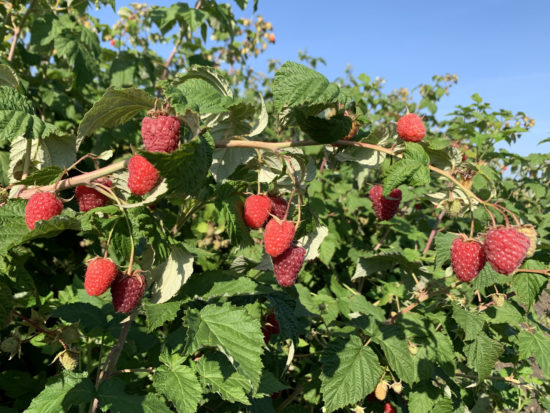
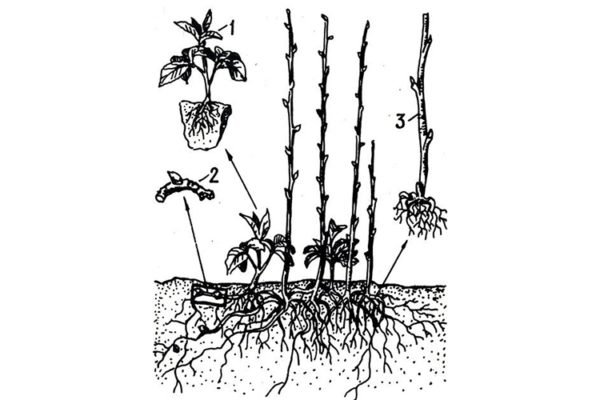
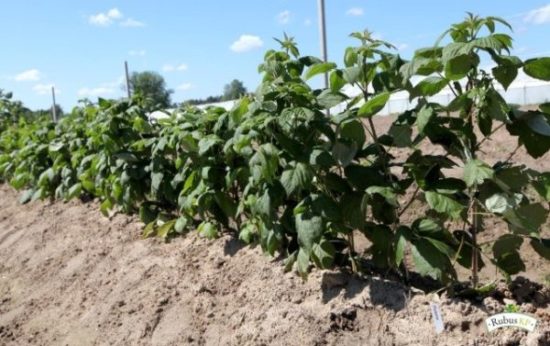


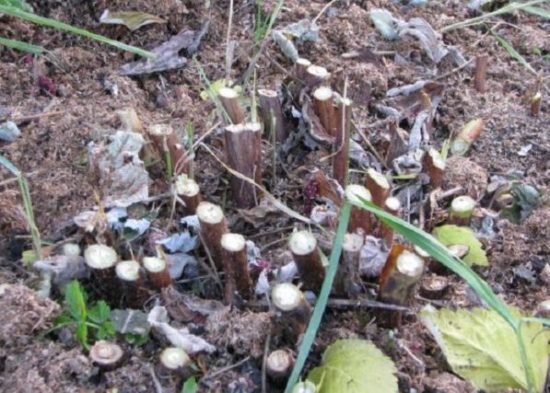
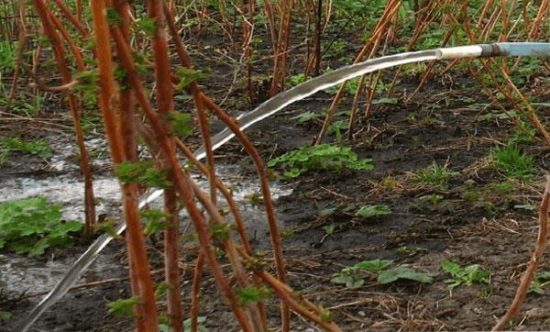
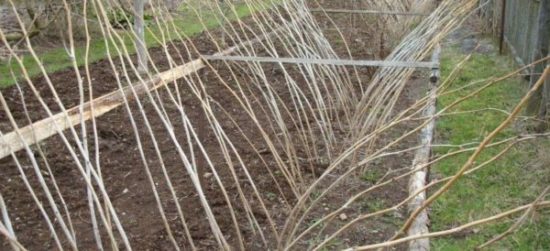
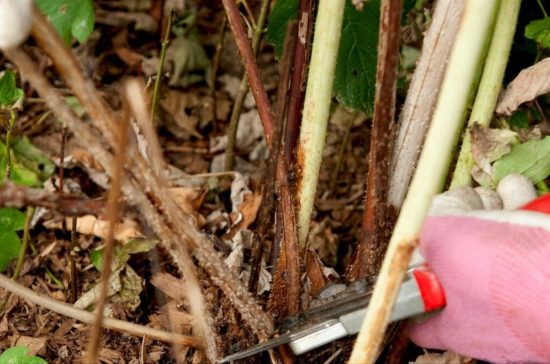
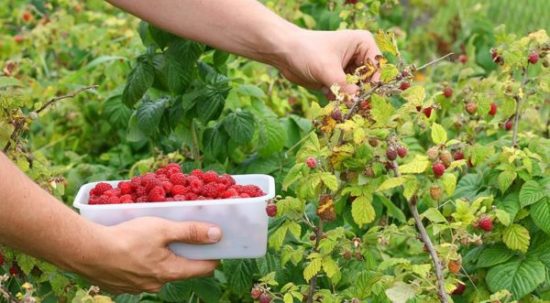
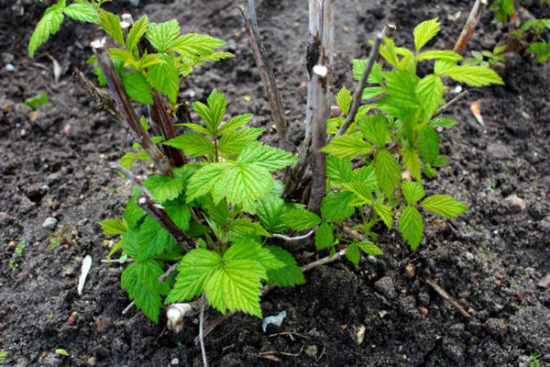
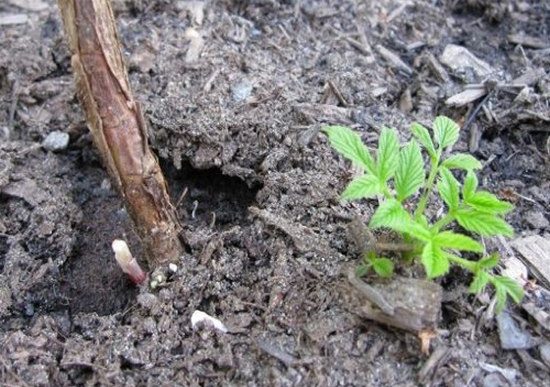


 CUCUMBERS NEVER GET SICK, I'VE BEEN USING ONLY THIS FOR 40 YEARS! I SHARE A SECRET WITH YOU, CUCUMBERS ARE LIKE THE PICTURE!
CUCUMBERS NEVER GET SICK, I'VE BEEN USING ONLY THIS FOR 40 YEARS! I SHARE A SECRET WITH YOU, CUCUMBERS ARE LIKE THE PICTURE! You can dig a bucket of potatoes from each bush. Do you think these are fairy tales? Watch the video
You can dig a bucket of potatoes from each bush. Do you think these are fairy tales? Watch the video
 How our fellow gardeners work in Korea. There is a lot to learn and just fun to watch.
How our fellow gardeners work in Korea. There is a lot to learn and just fun to watch. Eye trainer. The author claims that with daily viewing, vision is restored. They don't charge money for views.
Eye trainer. The author claims that with daily viewing, vision is restored. They don't charge money for views. A 3-ingredient cake recipe in 30 minutes is better than Napoleon. Simple and very tasty.
A 3-ingredient cake recipe in 30 minutes is better than Napoleon. Simple and very tasty. Therapeutic exercises for cervical osteochondrosis. A complete set of exercises.
Therapeutic exercises for cervical osteochondrosis. A complete set of exercises. Which indoor plants match your zodiac sign?
Which indoor plants match your zodiac sign? What about them? Excursion to German dachas.
What about them? Excursion to German dachas.